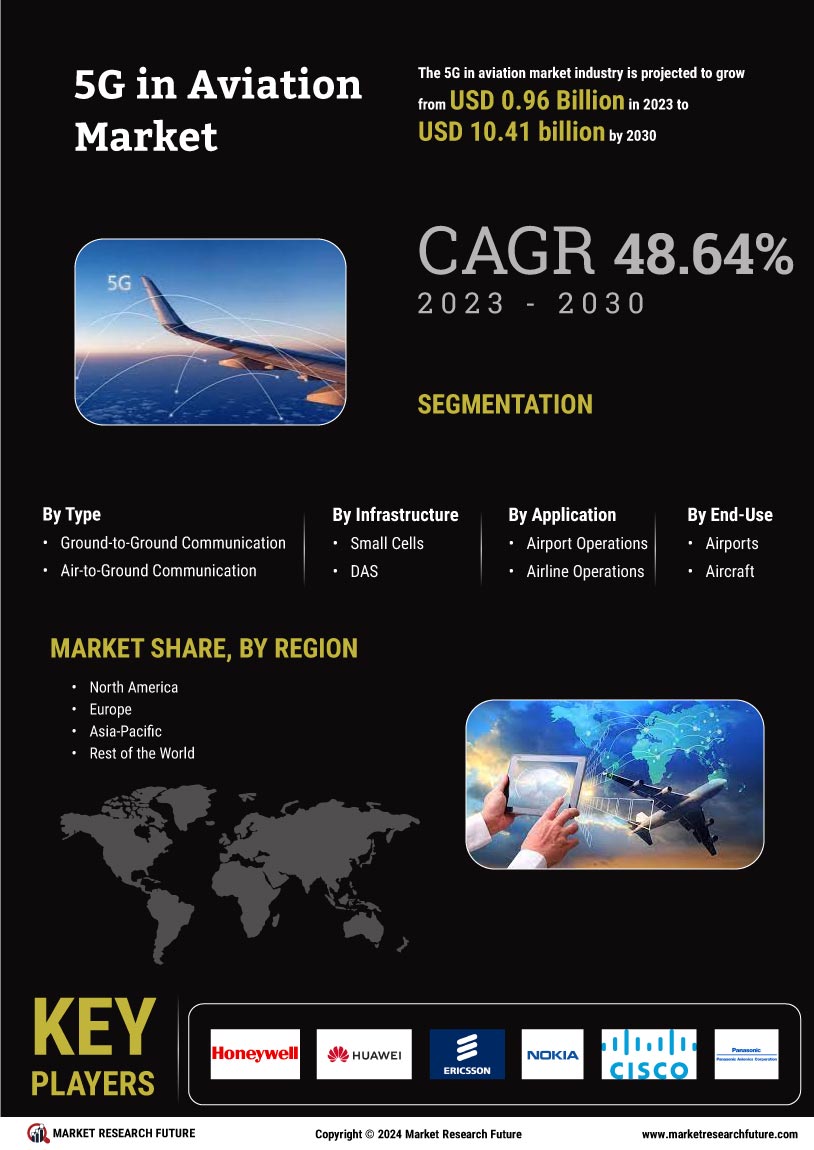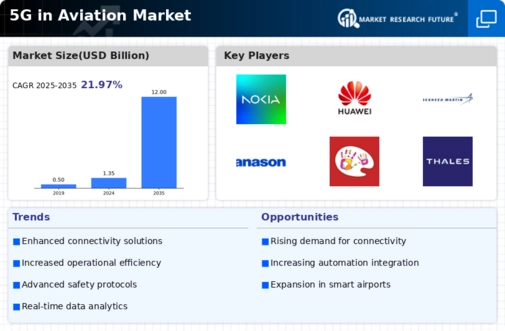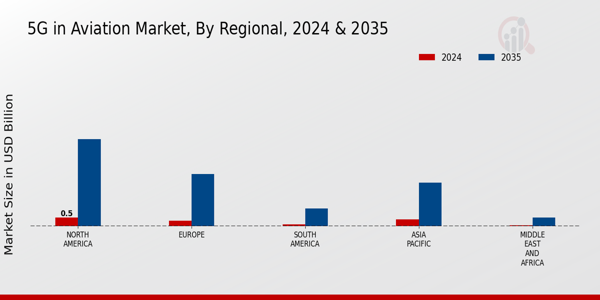Support for Autonomous Aircraft Operations
The emergence of autonomous aircraft operations is a key driver in the 5G in Aviation Market. 5G technology provides the necessary infrastructure to support the communication needs of autonomous systems, enabling them to operate safely and efficiently. With low latency and high reliability, 5G can facilitate real-time communication between autonomous aircraft and ground control, ensuring that safety protocols are adhered to. As the aviation industry moves towards automation, the demand for 5G connectivity is expected to rise, potentially leading to a new era of aviation where autonomous flights become commonplace.
Real-Time Data Analytics and Decision Making
The integration of 5G technology in the Aviation Market facilitates real-time data analytics, which is crucial for informed decision-making. Airlines can leverage high-speed data transmission to analyze flight data, weather conditions, and passenger preferences instantaneously. This capability may lead to optimized flight routes, reduced fuel consumption, and enhanced safety measures. Furthermore, the ability to process large volumes of data in real-time can improve maintenance schedules and reduce downtime for aircraft. As a result, airlines are likely to see a reduction in operational costs and an increase in overall efficiency, making 5G a vital component of modern aviation.
Enhanced Maintenance and Predictive Analytics
The 5G in Aviation Market is increasingly focusing on enhanced maintenance practices through predictive analytics. With the ability to transmit data at unprecedented speeds, airlines can monitor aircraft systems in real-time, identifying potential issues before they escalate into serious problems. This proactive approach to maintenance can lead to significant cost savings and improved safety. Industry reports suggest that predictive maintenance can reduce maintenance costs by up to 30 percent. As airlines adopt 5G technology, they are likely to invest in advanced analytics tools that utilize this data, thereby transforming their maintenance strategies and enhancing operational reliability.
Increased Connectivity and Data Transfer Rates
The 5G in Aviation Market is poised to benefit from the enhanced connectivity and data transfer rates that 5G technology offers. With speeds potentially reaching up to 10 Gbps, airlines can provide passengers with seamless internet access during flights. This capability not only enhances the passenger experience but also allows for real-time data sharing between aircraft and ground operations. According to industry estimates, the demand for in-flight connectivity is expected to grow significantly, with a projected increase in connected devices on aircraft. This trend indicates that airlines are likely to invest heavily in 5G infrastructure to meet passenger expectations and improve operational efficiency.
Improved Passenger Services and Personalization
The 5G in Aviation Market is likely to see a transformation in passenger services through enhanced personalization. With the capabilities of 5G, airlines can offer tailored services based on real-time data analytics of passenger preferences and behaviors. This could include personalized entertainment options, targeted promotions, and improved customer service interactions. As airlines strive to differentiate themselves in a competitive market, the ability to provide customized experiences may become a crucial factor in attracting and retaining customers. The integration of 5G technology is expected to play a pivotal role in shaping the future of passenger services in aviation.


















Leave a Comment